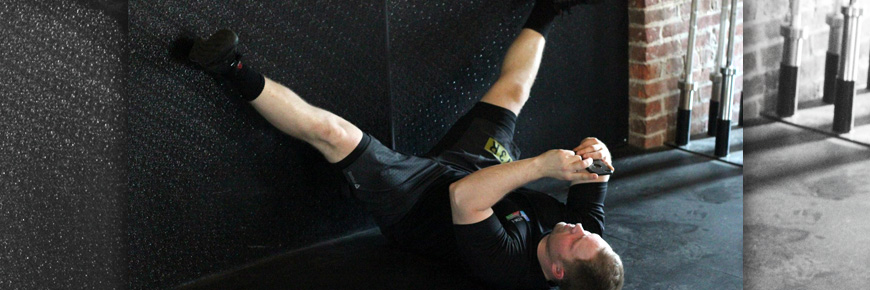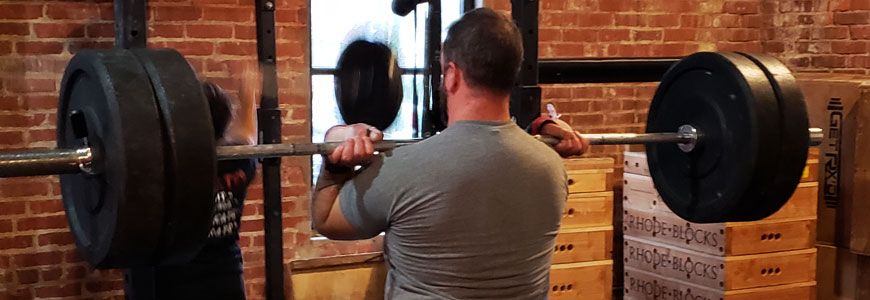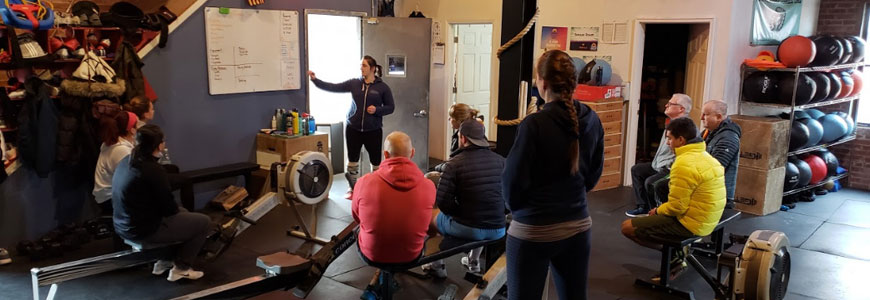SKILL
1000m row (re-test)
Last done on 07/20/18.
WOD
4RFT
8 burpees over parallette
10 T2KB
12 front rack lunges (95/65)
14 Russian swings (70/53)
HELPFUL INFO
Eating right isn’t always fun, but it’s still preferred to alternatives like obesity and chronic conditions. Unfortunately, the standard American diet is laden with processed foods and often lacks wholesome ingredients. For some, this issue creates dietary deficiencies that can sabotage your well-being. But don’t fret: There’s a fix.
The Department of Health and Human Services, along with the USDA, identify potassium, dietary fiber, choline, magnesium, calcium and vitamins A, D, E and C as “underconsumed nutrients.” They note that iron is another one to consider for adolescent girls and women ages 19–50.
But according to the report: “Of the underconsumed nutrients, calcium, potassium, dietary fiber and vitamin D are considered nutrients of public health concern because low intakes are associated with health concerns.”
Fortunately, a few dietary changes can elevate us to the recommended levels and right the ship that is our health. Read on for the reasons we need these four essential nutrients and ways to add them through a few dietary tweaks:
CALCIUM
WHY WE NEED IT
Calcium supports strong bones and teeth — everyone knows that. But calcium is also integral to heart function, the nervous system and your blood’s ability to clot.
HOW TO GET IT
Everyone knows that dairy (ie. milk, cheese and yogurt) are all high in calcium, but did you know that dark, leafy greens like kale are a good source of the mineral as well? So, if dairy doesn’t sit well with you, make sure you’re mixing plenty of greens into your diet. And if you’re not eating them … add them to your daily morning or post-workout smoothie!
POTASSIUM
WHY WE NEED IT
If you want your heart to keep functioning, your blood pressure and electrolyte levels to remain balanced and your muscles to work properly, potassium is for you.
HOW TO GET IT
Don’t be shy when it comes to potatoes, sweet potatoes and beet greens, as they’re packing the potassium. Other sources include bananas and avocados.
DIETARY FIBER
WHY WE NEED IT
Dietary fiber is key for digestion, and per the FDA, it has also been shown to lower cholesterol in the blood and control blood sugar. That keeps your heart, and your gut, happy. Fiber also keeps you full longer, which can help curb snacking or overeating at your next meal.
HOW TO GET IT
In general, the darker the color of the vegetable, the higher the fiber content. Carrots, beets, and broccoli are fiber-rich. Collard greens and Swiss chard have 4 grams of fiber per cup. Artichokes are among the highest-fiber veggies, at 10 grams for a medium-sized one. Apples and berries also pack a good amount of fiber.
VITAMIN D
WHY WE NEED IT
Vitamin D is a vital nutrient that benefits your bones, muscles and immune system. Interestingly, it’s the only nutrient that we can both eat and create — the latter coming via our body’s processing of sunlight.
HOW TO GET IT
Salmon, trout and other oily fish are a great source of vitamin D. So are eggs, whole milk and fortified cereals. But one’s diet is rarely enough to meet the daily requirement (about 600–800 IU), so for more vitamin D, step outside. Regular bouts of natural sunlight are still the best way to up your intake, but time of day, season, skin color, sunscreen and other factors can impact your ability to absorb vitamin D. Ten to 15 minutes of sunshine per day is often enough to do the trick, but sun exposure carries an increased risk of skin cancer, so be careful out there.








